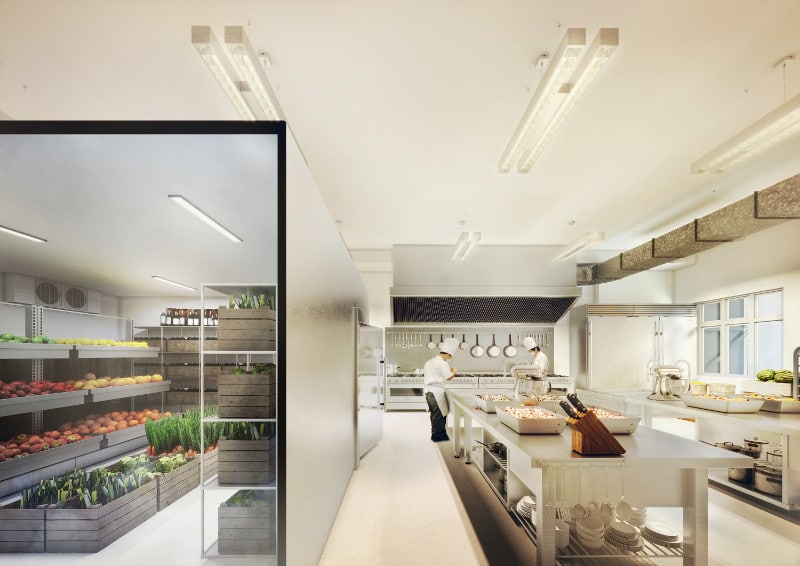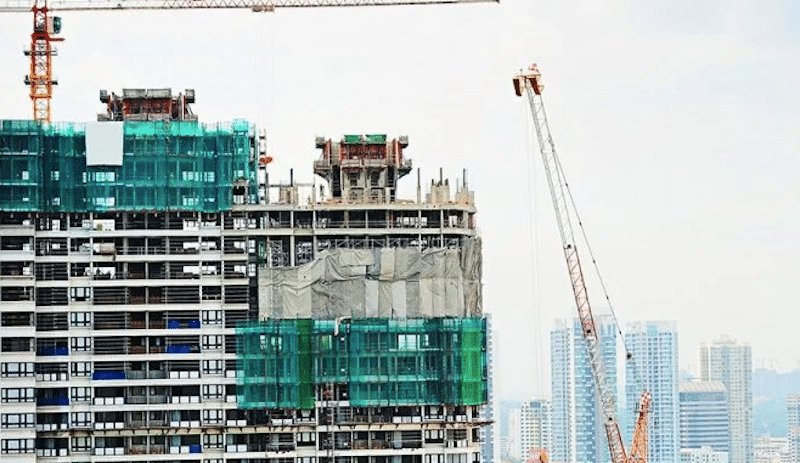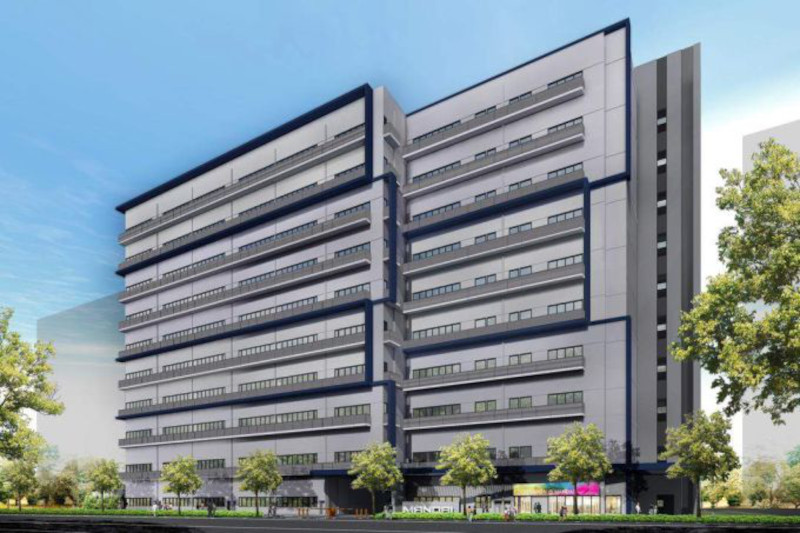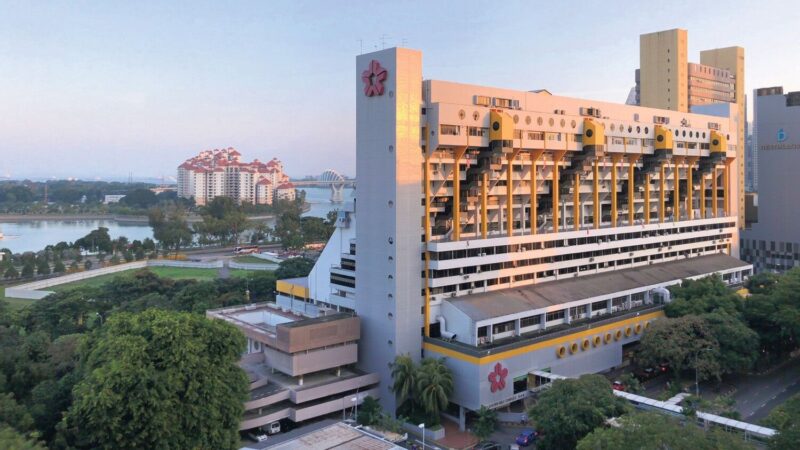Increase in Demand from Online Food Delivery Services
With more pent up demand for food delivery services like FoodPanda, GrabFood, Deliveroo, more food factory space are being allocated to serve the pent up demand to package, store, cook, and process food. There are about 3.68 million square feet of food factory space being allocated in the pipeline.
With Singapore implementing Circuit Breaker for 2 months, there’s a surge for online food delivery as restaurants, fast food, and even hawker center does not have seats and can’t dine in. Most people also reduce their outdoor activities and opt for online delivery instead that drive up pent up demand for online food delivery services.
This pent up demand for online food delivery services will, in turn, drive pent up demand for food processing factories in line with government directions to be more self-sufficient in our essential daily necessities such as food and water.
Most of these food factories are located in Northern, Western, and eastern regions of Singapore. 80% of them are expected to be completed by 2020. Some of the bigger food factory projects include JTC Bedok Food City and an integrated Halal Food Hub in the western region.
Overall, food factories in Singapore account to about 10% of manufacturing facilities. Due to the nature of the perishable nature of the food life span, this sector is under strict regulation and special licenses need to be granted prior operation. Most of these food factories are located in JTC Food Industrial Zones and are only for rent, not for sale.
Type of Food Factories
F&B Operators can choose from various type of Food factories such as ramp-up and flatted factories. Differences between the two lies in the loading and unloading is done. For Ramp-Up Factories, unloading happens at your doorstep which can be very convenient if you have lots of goods to load and unload on a daily basis.
Flatted factory on the other hand, loading and unloading happens on level 1 loading bay. Ideal for those who don’t have more much goods for loading and unloading activities on a day to day basis.
Thus, depending on the nature of your business activities, these 2 types will cater well to your needs depending on your requirements.
JTC Bedok Food City
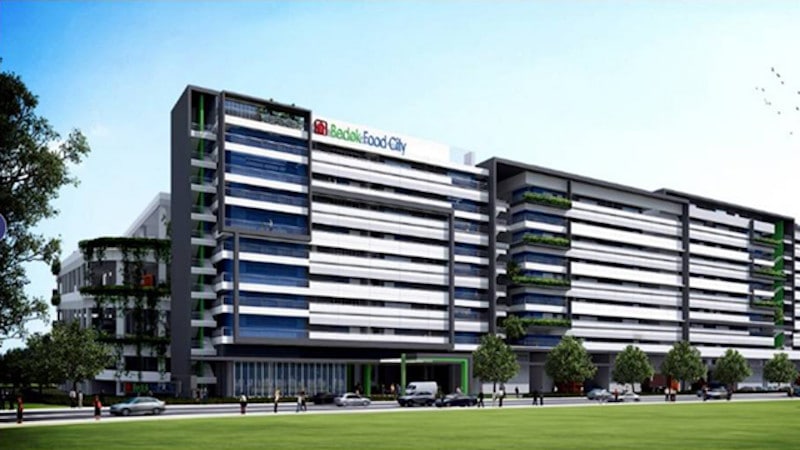
JTC Bedok Food City is due for completion in 2020 and has more than 1 million sqft total gross floor area. There’s also an integrated halal food hub over at the Western Region of Singapore that span over 600,000 sqft.
FoodPanda has its own central kitchen in Woodlands Industrial Xchange and even have a dine-in option while Deliveroo too has its central kitchen at CT Hub 2 that offers pick-up option.
Demand in food factories are expected to lag behind supply for 2020 but will be sustainable due to the rise in demand for e-commerce services and food delivery services. Restaurants, F&B outlet and even hawker now also have online delivery services to streamline their retail space as part of government initiative for greater innovation and productivity in the food industry in Singapore.
Zoning of most Food Factory in Singapore
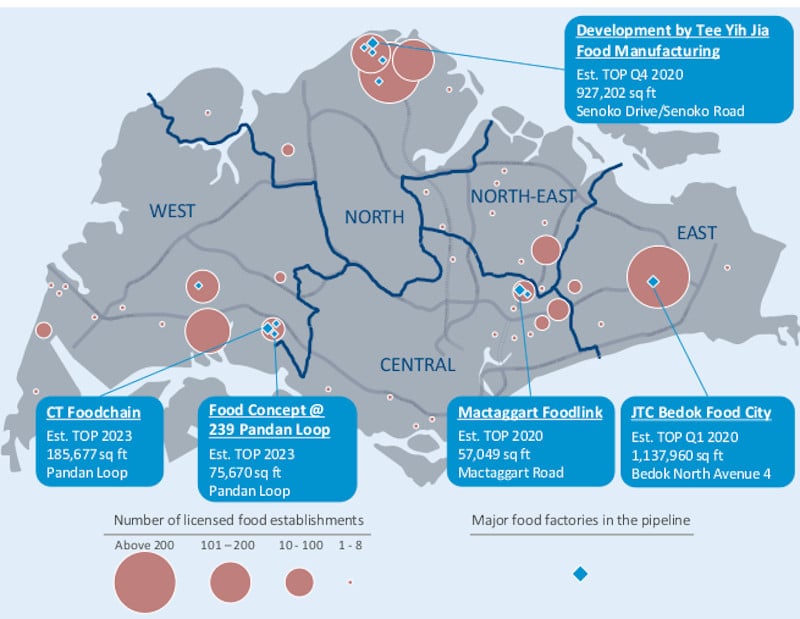
Most of the food factory’s sizes range from 2000 sqft to more than 40,000sqft and typically located in the Western and Northern regions of Singapore at various JTC Food Industrial Zones.
Due to the short time frame for food delivery and food processing, food factory in the more central regions will have a higher occupant rate and also higher sought after. Food factory space in a mature estate such as Bedok, Pandan Loop, Macpherson has a higher occupancy rate as compared to those in Tuas and Senoko, although they often come at a bigger floor plate.
Rents and prices of food factories are set to remain stable over the next 3 to 5 years despite the robust supply coming in the pipeline.
[table id=1 /]
Robust Supply in the Pipeline
There’s about 600,000 sqft of food factory space coming on board in 2019, about 1-2% of current food factory supply. This is a huge increase from 2018 to fill up the demand in food factory. Another 3.68 million square feet of food factories set to come on board between 2019 and 2020 and these food factories mainly located in the East, West and northern region of Singapore.
Food factory are strictly governed by SFA. Premises need to be inspected and special licenses need to be granted prior approval. That is why its often hard to own a food factory that is the zone for industrial and yet able to convert and operate as food factory. On top of that, JTC only rents the units to business operators who likely have to pay rent all the way as long as they stay in the business.
For investors and business owners who are cash-rich and wanted to invest in this food factory, there are however limited supply on the market. The best combination is of course, able to run the business, yet do not have to pay rent and having the property to appreciate over the years. Some of the freehold food factory selling on the market include Mactaggart Foodlink and Citrine Foodland which just launched in 2020. However, this option is not easy as most of these freehold food factories has a price tag of about $3 million marks.
Streamline of Retail Spaces in F&B
More restaurants, F&B operators are streamlining their business operations to cut the retail space due to the high rental involved. Process and pack the food at the food factory while adopting online platforms and app to reach out to consumers for order taking and adopt online delivery service to fast delivery to consumers in a short period of time.
In an F&B business, often, retail space rental take up the highest overhead. Thus, if can cut this retail overhead, F&B Operator can have less cost and also higher productivity.
Rental and Prices to remain Stable for Food Factory
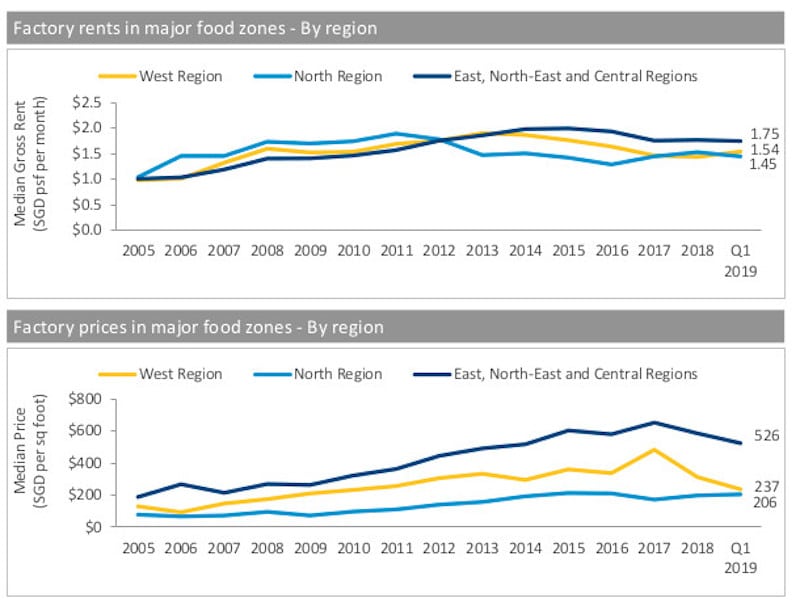
Rental rates and transacted prices generally remain healthy due to pent up demand in food factories. This can be seen from the above chart which shows central, east, and north-east region remains to be the highest south after location. This is likely due to the nature of the food industry where raw food materials have a short lifespan. On top of that, it’s easier and more convenient for customers to pick up their food for retail. Thus nearer to residential zone and city centres are often more highly sought after.
Average rental from Central, North-East and East outperform the western and northern regions of Singapore. Rental per square foot works out to be between $1.50 to $2.40 in the western and northern regions of Singapore.
Those good location factories with better configurations like freezer can fetch about 30% higher rental return. Overall, the food factory likely to yield about 6% return yield for those food factories with 30 years lease.
Overall, demand and rental set to remain stable over the next 5 years from all the demand for online delivery together with government initiatives to transform food industry.
Source: www.propertyreview.sg

